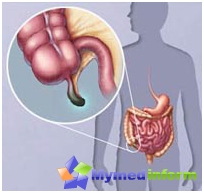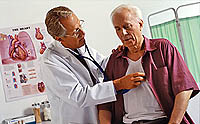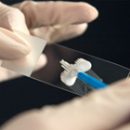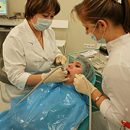Appendix - a Cell-shaped outflow of a blind intestine, which is located almost on the border between the thin and large intestine. What happens when he is inflamed? How to give first aid with an attack of appendicitis?
Content
Cell-shaped processes are available in many rodents, some predators, monkeys and, of course, in humans. The length of the human appendix on average is 5 - 15 cm, diameter - about 1 cm.
Presumably, its main task is to protect the delicate intestine from bacteria inhabiting the blind intestine.
What is appendicitis?
Appendicitis call inflammation of appendix. This disease occurs extremely often and requires an emergency surgical operation.
Appendicitis can happen to every person, regardless of age.
Causes of appendicitis

Those who were not lucky enough to get sick by appendicitis are confident that he had neither with this. However, the doctors are definitely known that the development of appendicitis can lead:
- Overly movable appendix and its inflection (for example, in children);
- The blockage of the lumen of the appendix by the carte masses during constipation (in the elderly) and simply undigested particles of food (seeds, grains);
- Food and any other infections;
- inflammatory bowel diseases;
- worms;
- Injuries of the belly.
What's happening?
Appendicitis develops gradually: in the first hours of the disease, the process swells, then fills in the pus. Without surgical treatment for 2-3 days, a rupture of the process occurs, the pus is poured into the abdominal cavity, the terrible peritonitis develops. The patient's condition becomes critical.
How to suspect appendicitis?
- The main symptom of appendicitis - abdominal pain. Most often, the pain in the upper half of the abdomen appears first, and then it moves to the right and down. However, often sick appendicitis experience pain in the right hypochondrium and pain, backing in the back or in the rear pass.
- Touching the stomach causes an amplification of pain.
- Belly muscles are tense.
- The patient presses the legs to the stomach.
- Nausea and vomiting appears.
- The character of the chair changes (constipation arises or, on the contrary, diarrhea).
- May increase temperature.
Special attention is required by children and older people. Children often can not clearly say where and how hurts. Floodiness, childlike childhood, refusal of food can talk about appendicitis. Elderly people have pain sensations can be smoothed, which leads to late diagnosis of the disease.
First aid
- If such symptoms appear, it is necessary to urgently cause ambulance!
- Before the examination of the doctor should not take painful agents and other medicines, as it will make it difficult to formulate the diagnosis. Also prohibited to eat and drink.
- In no case do not apply the heating ground to the stomach! Heat promotes the development of the disease and can lead to a rupture of the process! On the stomach you can put a cellophane package with ice.
- Call your doctor even if severe pains subsided. Pacific amection is often noted when the disease is moving into the most severe stage!
Diagnosis of appendicitis
Appendicitis - the disease of the gastrointestinal tract, then with this problem the most logical to contact a gastroenterologist. However, since the disease is usually developing acute, it is best to immediately go to the surgeon.
The doctor's diagnosis puts immediately after inspecting the patient. At the same time, women will require a preliminary consultation of the gynecologist, as appendicitis and inflammatory diseases of female genital organs are largely similar.
To confirm the diagnosis, ultrasound and X-ray studies of the abdominal organs are carried out. Even if the diagnosis of appendicitis cannot be immediately delivered, and the symptoms only resemble this disease, the patient is left in the hospital under observation, postpone the decision to carry out an operation for 12-24 hours.
In well-equipped centers in case of an unclear diagnosis, laparoscopy applies. This is the most reliable diagnostic method. During laparoscopy in the abdominal cavity through a small incision of the belly (up to one centimeter), a special tube is introduced, with which the surgeon examines the entire abdominal cavity.
If the diagnosis is confirmed, the laparoscopic removal of appendix.
Treatment of appendicitis
Calculate appendicitis only surgically - remove a worm-shaped process (appendectomy). Operation is performed under general or local anesthesia.
There are two appendix removal techniques.
- The most common - traditional appendectomy. This is an ordinary surgical surgical operation at which the cut of the belly is made to the right and remove the inflamed black-shaped process.
- Laparoscopic appendectomy (endoscopic operation) is used less frequently, in the event that laparoscopy was used to diagnose. Compared with traditional appendectomium, such a technique provides less blood loss and a decrease in the risk of postoperative complications.
If the features of the arrangement of the appendix do not allow to remove its laparoscopically, then the surgeon moves to the traditional appendectomy.
The success of treatment directly depends on the timing of appeal to the doctor.









